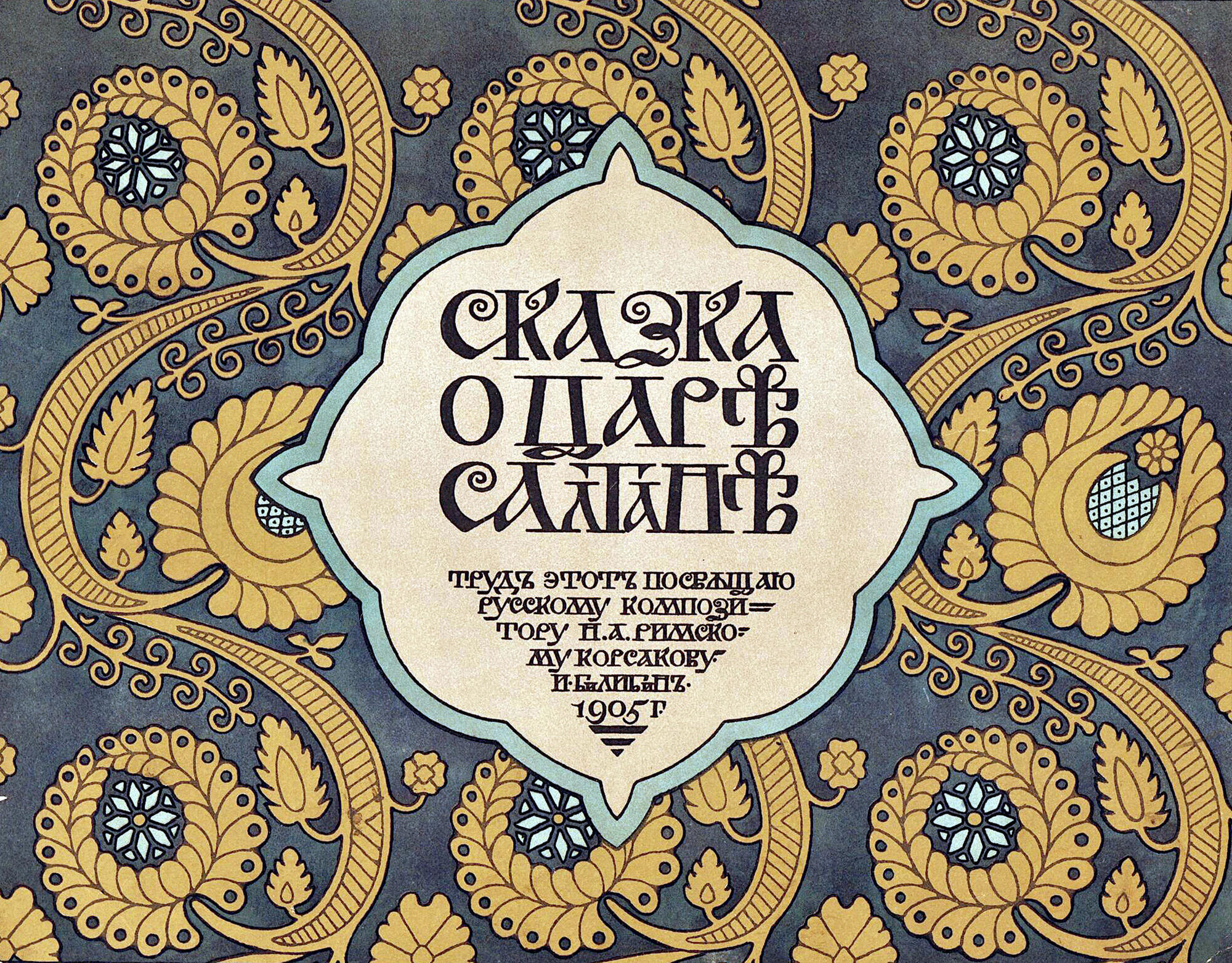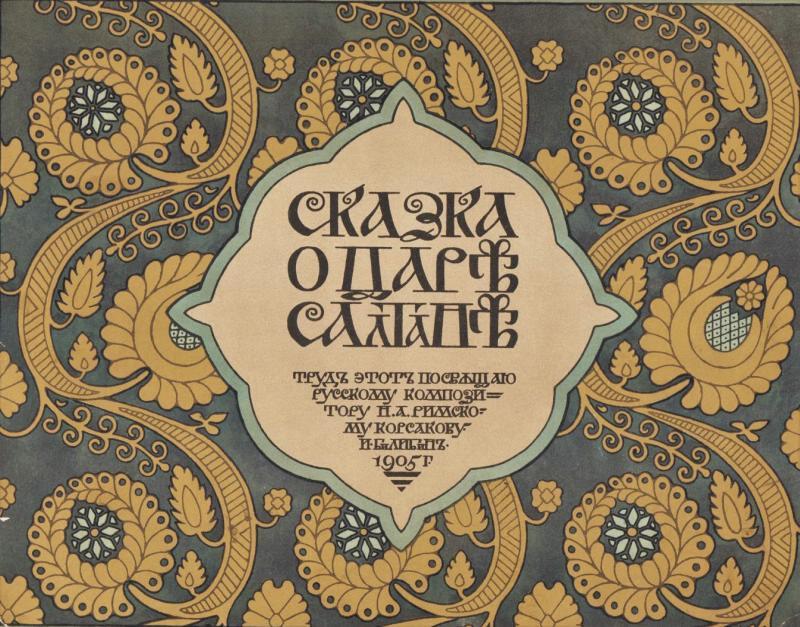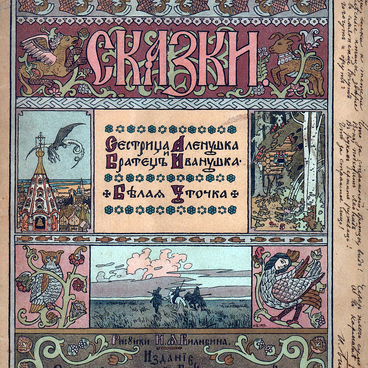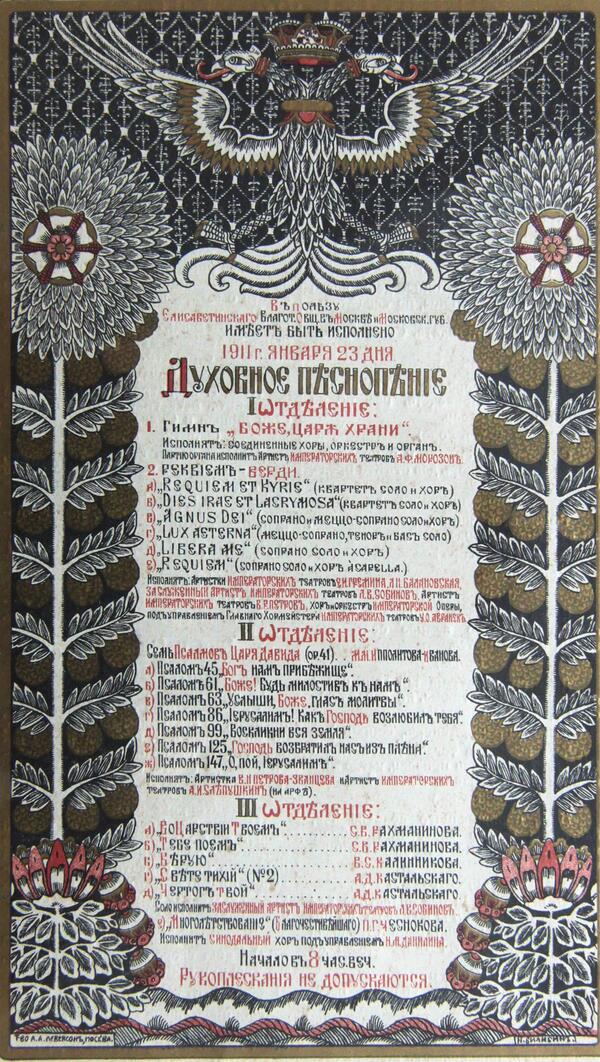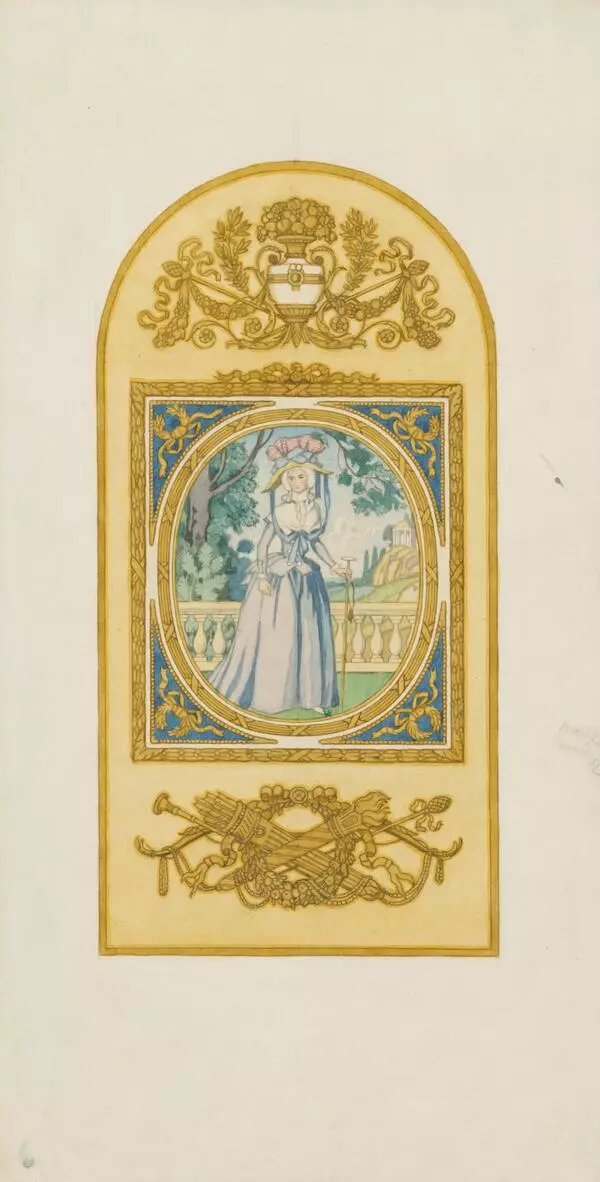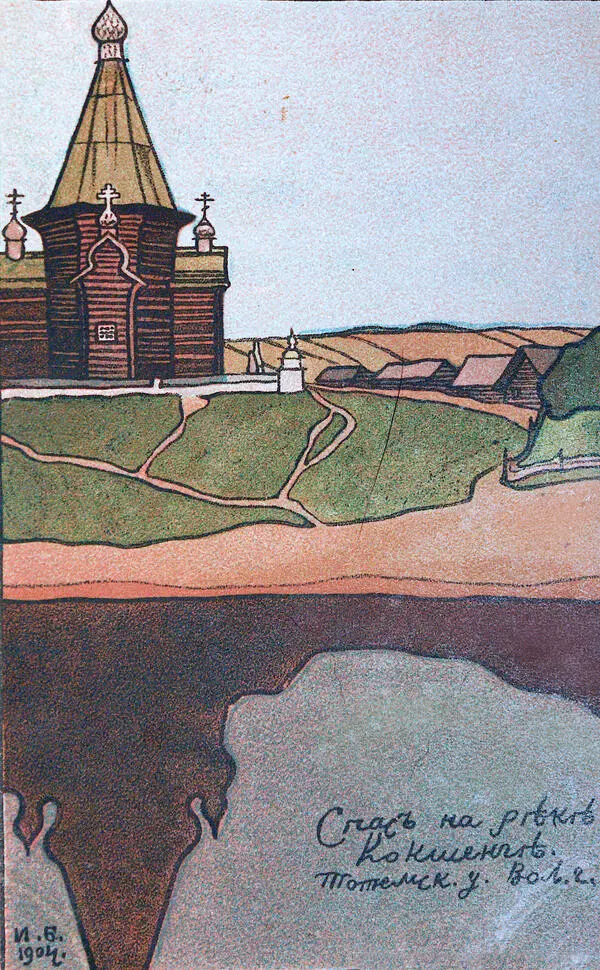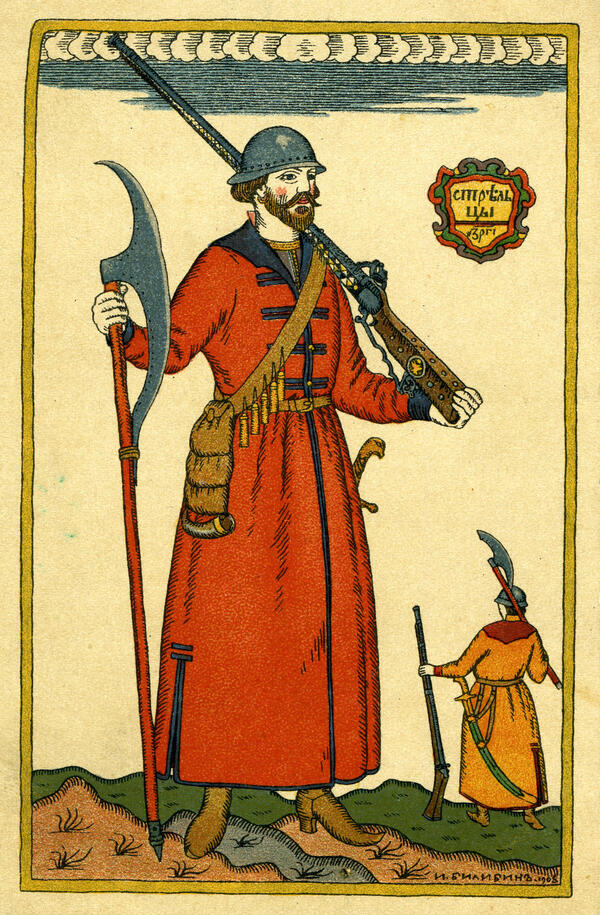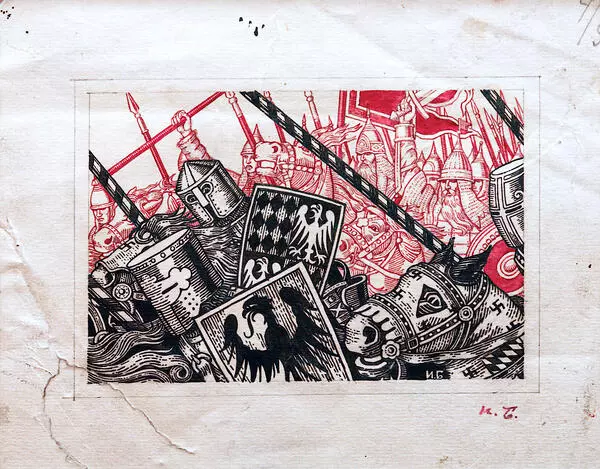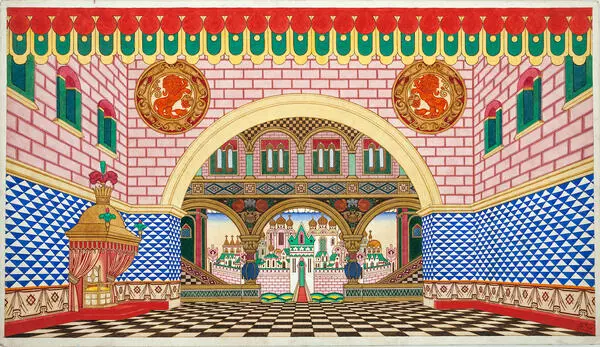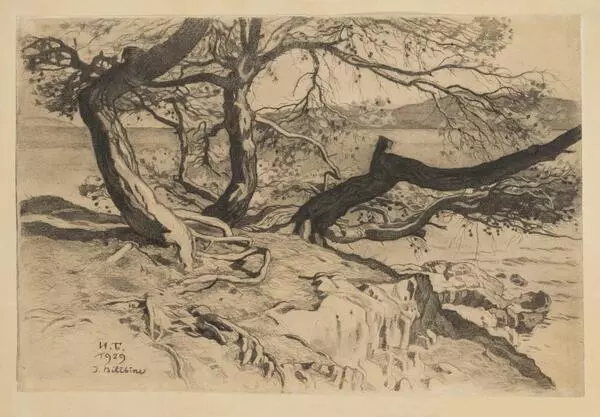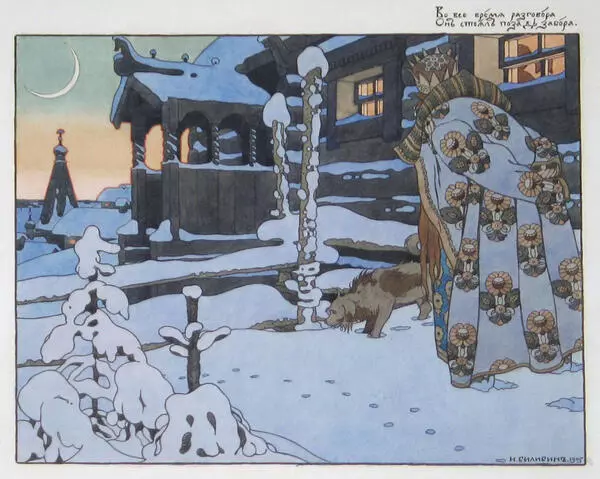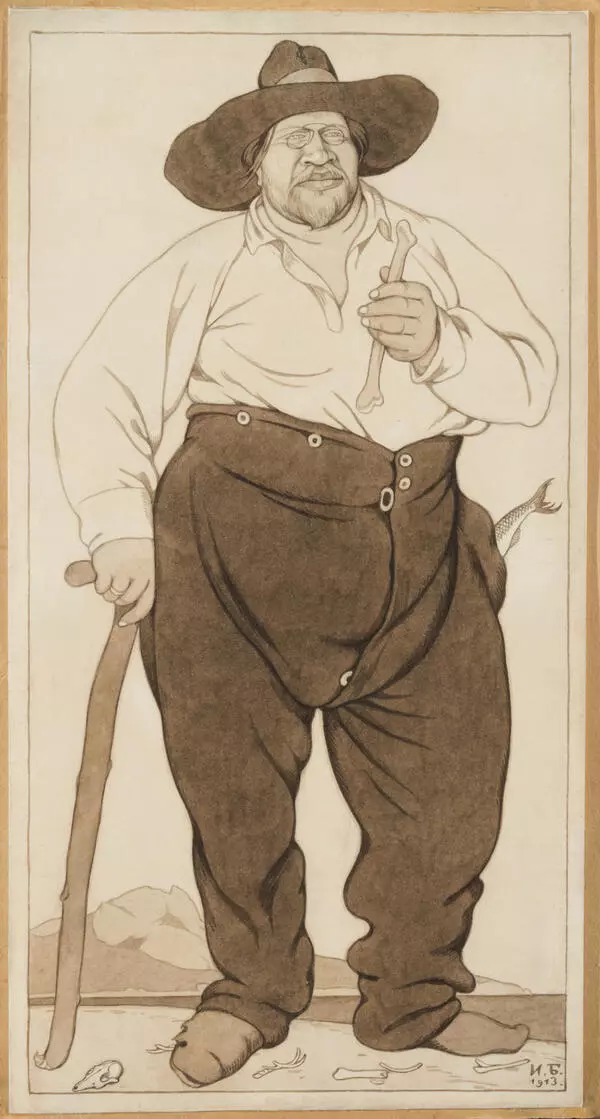In 1904, the famous Russian painter Ivan Yakovlevich Bilibin illustrated “The Tale of Tsar Saltan” by Alexander Sergeyevich Pushkin. This fairy tale with its vivid scenes of Old Russian life fed Bilibin’s imagination, allowed the master to create charming drawings, demonstrating in them with all generosity and brilliance his knowledge of the 17th–century art, “this enchanting fabulous time in folk art.”
During his work on the illustrations of “The Tale of Tsar Saltan”, peasant household items, which Bilibin collected in the Russian North, sketches and photographs of monuments of wooden architecture, as well as some authoritative works of archaeologists and art historians invariably serve as auxiliary materials for the artist. He strives for accuracy in the depiction of architecture, costumes, and tableware. At the same time, having the ability characteristic of the “World of Art” members to create a magical world with historically authentic details, Bilibin remains an artist-storyteller. Bilibin combines the sophistication of the graphic form and the peculiar “scholarship” of his drawings with his love of a joke. He knows how to exploit a mundane detail in a comic way, notice a funny trait in the appearance of a person and make it grotesque.
The Russian style of narration is reflected in the ornamental design of the cover. Huge exotic flowers seem to have descended to the pages of the fairy tale from folk paintings on wood. The artist also uses “uzorochie”, or “Russian pattern”, that is, he completely fills the entire surface with small details, tendrils, buds, leaves, and flowers. Against this decorative background, the artist placed a frame in the center. It is reminiscent of relief décor on exterior walls characteristic of Old Russian architecture. The frame features the title of the fairy tale, written in an elegant font and stylized to look like ancient Slavic writing, and the inscription:
During his work on the illustrations of “The Tale of Tsar Saltan”, peasant household items, which Bilibin collected in the Russian North, sketches and photographs of monuments of wooden architecture, as well as some authoritative works of archaeologists and art historians invariably serve as auxiliary materials for the artist. He strives for accuracy in the depiction of architecture, costumes, and tableware. At the same time, having the ability characteristic of the “World of Art” members to create a magical world with historically authentic details, Bilibin remains an artist-storyteller. Bilibin combines the sophistication of the graphic form and the peculiar “scholarship” of his drawings with his love of a joke. He knows how to exploit a mundane detail in a comic way, notice a funny trait in the appearance of a person and make it grotesque.
The Russian style of narration is reflected in the ornamental design of the cover. Huge exotic flowers seem to have descended to the pages of the fairy tale from folk paintings on wood. The artist also uses “uzorochie”, or “Russian pattern”, that is, he completely fills the entire surface with small details, tendrils, buds, leaves, and flowers. Against this decorative background, the artist placed a frame in the center. It is reminiscent of relief décor on exterior walls characteristic of Old Russian architecture. The frame features the title of the fairy tale, written in an elegant font and stylized to look like ancient Slavic writing, and the inscription:
